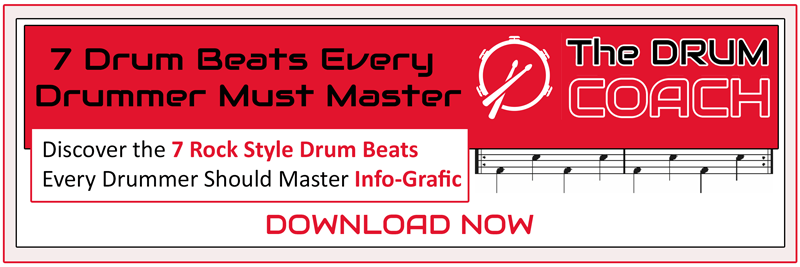Do you dream of playing the drums but don’t have a drum kit yet? Stick around, because in this post, I’ll show you how you can start learning drums right now, even without a kit—and why this method can actually make you a better drummer in the long run. So, if you want to learn to play the drums but don’t have a kit, for whatever reason. It’s time to take advantage of your current position.
Learning to play the drums without a drum kit might sound impossible, but it’s absolutely doable—and incredibly effective. In fact, starting this way can build a strong foundation in theory, technique, and rhythm that will set you up for success when you finally get behind a kit. Today, I’ll walk you through the best ways to get started, the tools you’ll need, and why this approach works so well for beginners.
Yes, you can learn to play drums without a kit, and here’s how to do it. First, grab a pair of drumsticks. They’re your most essential tool, and you don’t need a fancy practice pad to get started. A hard pillow works just fine. Use this to practice basic drum rudiments—the building blocks of drumming. Think of rudiments as the scales of drumming; mastering them will give you the control and precision you need for any style of play.
Using the pillow technique helps you to get the physical movements right. Especially if you practice to a metronome. Which of course you should. You will find a free metronome on the drum coach blog. And there are plenty online.
Using your favorite songs as a metronome to practice can also be useful. But you may be tempted to play rather than practice. So get yourself a metronome to start with.
Next, learn to visualize yourself at a drum kit. This may sound odd, but mental practice is a powerful tool. Picture the placement of each drum and cymbal, and rehearse your movements as if you’re playing on a real kit. This not only builds muscle memory but also helps you get comfortable with the layout of a drum set.
It also gets you to take advantage of your greatest asset. Your mind.
When you practice, you are really programming your mind and muscles to remember certain movements, sounds, beats, and fills, as well as the more technical aspects of drumming. And whether you know it or not, you cannot do anything external until you first understand it internally. This all ties in with the four levels of learning concept. Starting with you don’t know what you don’t know. Followed by, you now know what you didn’t used to know. When you know what to practice you just need to practice. Then, you slowly become the unconscious competent. Meaning you have practiced many things or just one thing. And you have become a master of that thing. Or things.
This is how the mind works and how everything in life works. Well, to a large degree anyway.
Moving back to drumming, you can begin that learning or programming process with just a pair of sticks and your imagination. Oh, not forgetting the desire and discipline to do the work you need to do to get where you want to be. As a drummer or in any other area of life.
To take things further, dive into learning drum theory and notation. My Drumming Foundation Series is a great place to start. As it focuses on hearing beats, understanding how they’re written, and practicing the movements involved—all without needing a drum kit. You can go through the entire series this way, learning at your own pace while building a solid understanding of rhythm and technique.
There’s also plenty of beginner information at the drum coach blog website.
This approach requires discipline and motivation, but the payoff is worth it. When you finally get a drum kit, you’ll already have a strong grasp of the fundamental basics, making the transition to real drumming on a real kit much smoother. By focusing on theory and foundational skills now, you’ll develop a deeper understanding of music, timing, and coordination that will serve you well throughout your drumming journey. You also get an early start in learning and mastering rudiments.
To finish off, when I found myself stuck for practice due to my environment having other ideas about the decibels they wanted to take in. I turned to my bike. If you used your imagination you would see that what I meant by that was that I practiced rudiments on my bike tires. They provide plenty of bounce and make hardly any noise. So if you have a bike you are halfway there. Failing that, an old car tire that’s inflated could also be a great idea. I have used both in the past and they ended my frustration more than once caused by not being able to practice.
So, can you learn to play the drums without a drum kit? Absolutely—and starting this way might just make you a better drummer in the long run. Especially if you get to work on the rudiments. And your imagination. But what about when you should actually get a drum kit? If you’re wondering when it’s the right time to invest in one, I’ll walk you through what to consider in the next post. See you there!






